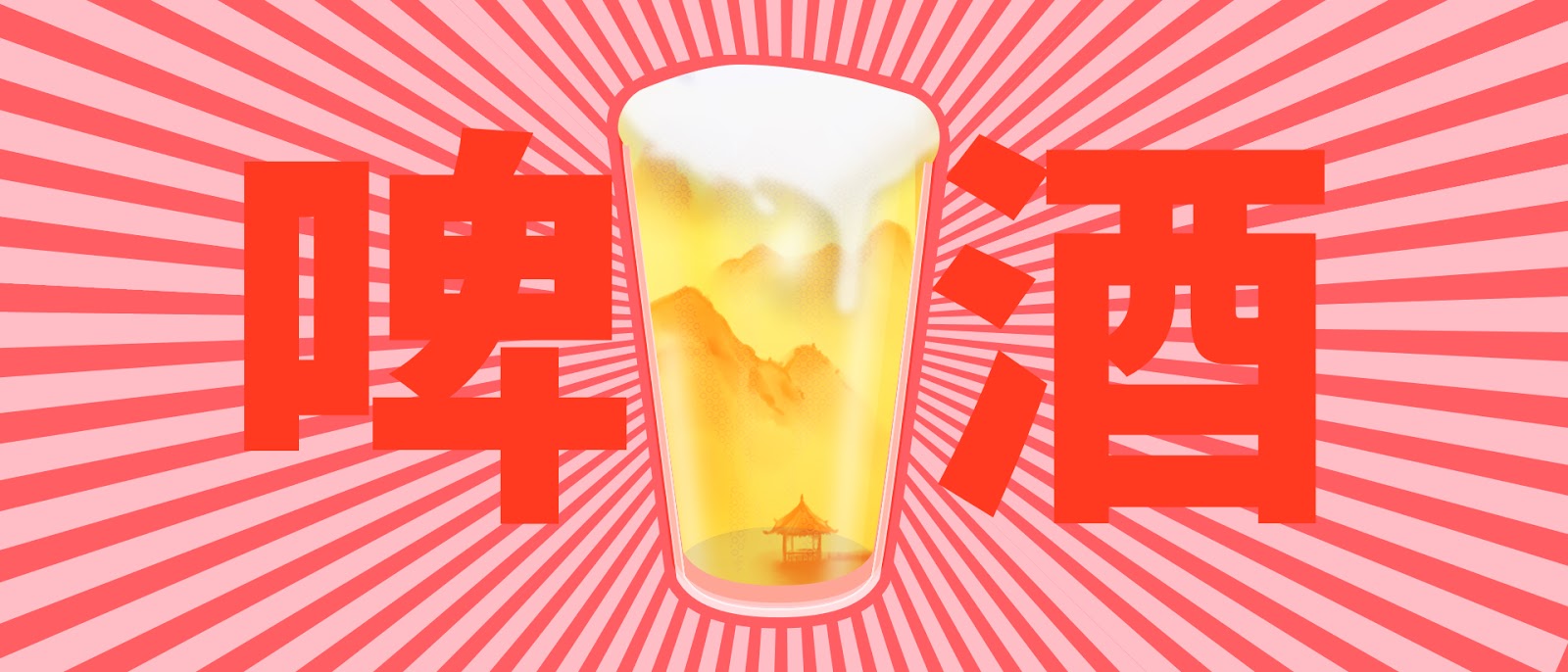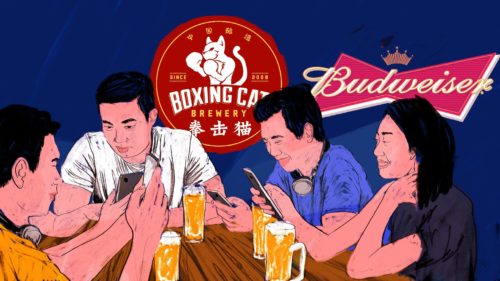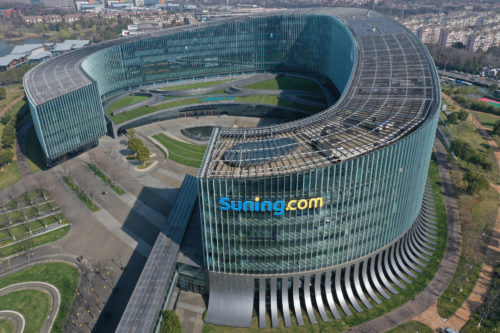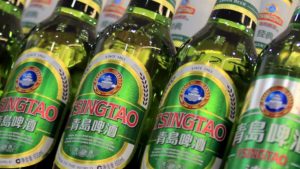Craft beer in China: A brief and complete history
A survey of craft beer in the Middle Kingdom, from Boxing Cat and Master Gao and Great Leap Brewing in the early days (2008-10) to a new generation of independent breweries scattered across China; from tea lagers and Sichuan peppercorn-inspired brews to durian porters and a "hot dry noodle stout."

Snow Beer is as far as one can get from craft beer while still inhabiting the same planet, but its story is instructive. Snow started in Shenyang in 1994 as part of a joint-venture brand between multinational SABMiller and China Resources Beer (CRB). It rapidly expanded, gobbling up middling provincial breweries around the country. By 2006, Snow had acquired more than 50 breweries and had become China’s largest beer producer by volume. By 2010, it was the biggest in the world.
A few years ago, CRB shifted course. SABMiller sold back its stake in 2016 (prior to merging with AB InBev), and CRB in turn sold a minority stake to Heineken in 2018. Earlier this year, CRB announced it would be shuttering about 20 of its breweries in the next five years. The plan is to shift focus away from low-end Snow toward premium Heineken products, which cost roughly twice as much.
Snow’s thaw suggests that China’s beer preference is changing, and quickly. Though Heineken is a far cry from the bitter, tangy brews that delight beer snobs around the globe, its ascendance shows that Chinese beer drinkers are demanding more from breweries. And it’s impossible to separate this trend from the craft breweries and brewpubs that have sprung up like mushrooms in Chinese cities over the past decade.
Craft beer still comprises a small part of China’s drinking landscape, but even a small subset of a beer market valued at around $85 billion is significant. And China’s long, tendentious relationship with beer reveals much about where the country has been, and where it may be heading.
A frothy survey of beer in China
The Chinese started making beverages from fermented grain about 9,000 years ago — long before anyone else — but have largely eschewed beer. One of the oldest Chinese tipples was li, a weak beer made from sprouted cereals and wild yeast, which fell out of favor in the first or second millennium. It was replaced by a more potent drink made with a sophisticated grain-based culture of microorganisms. That drink remained the most popular alcoholic drink in China until the 20th century, and its name, jiu, became synonymous with alcoholic beverages in East Asia (today we call this drink huangjiu).
It took foreign intervention to resurrect beer. In 1900, a Polish-Russian immigrant established China’s first European-style brewery in Harbin, which survives as the city’s eponymous brewer. Three years later, the British and German Beer Corporation established the Tsingtao Brewery, which fell under Japanese control, along with the city of Qingdao, in 1914. Yet these beers made few inroads with local consumers: When the PRC was established in 1949, the country had fewer than 10 breweries with a combined output of 70,000 liters.
The beer industry stagnated during the Mao years, but took off with the rest of the economy in the decades that followed. From 1980 to 1985, production increased almost fivefold to surpass 3 billion liters. By 1990, beer was the most popular alcoholic beverage in China by volume. Through continued expansion, consolidation, and foreign investment, China then overtook the U.S. to become the world’s largest producer of beer in 2002, and was consuming about 50 billion liters by 2011.
There was only one problem: The beer was utterly forgettable. About 99 percent of it was watery yellow lager, much of it as low as 2.5% alcohol by volume (Budweiser, by contrast, is 4.2%). This of course makes sense in context. In China, beer is a sideshow to the main attraction, baijiu, and its relative weakness makes it valuable for rehydration.
Meanwhile, a countervailing force began to take root in China’s cosmopolitan first-tier cities. Specialty import beers started flooding in from America and Europe: Rogue, Vedett, Duvel, Brewdog, and countless others. Not far behind them were China’s first craft breweries.
China’s independent brewing scene
As Mark Twain allegedly noted: “History never repeats itself, but it rhymes.” Roughly a hundred years after foreigners quietly introduced China to a different kind of beer, they were at it again, but this time they weren’t alone.
There is little consensus as to the first craft brewer in China. Some sources attribute the honor to Texan Gary Heyne, who oversaw beer production at short-lived Henry’s brewpub in Shanghai, which opened in 2006. Heyne went on to co-found Boxing Cat Brewery in 2008 before tragically passing away in 2010. Around the time Boxing Cat opened, Gao Yan began brewing commercially in Nanjing, later founding the Master Gao brand. In the northern capital, the inaugural honors belonged to American expats Carl Setzer and Dane Vanden Berg, who opened Great Leap Brewing in 2010.
Others trace craft beer’s arrival in China further back. Paulaner Bräuhaus in Beijing’s Kempinski Hotel has been making small-batch beer since 1992. There was also expat Alex Wong, who created the mostly forgotten San Francisco Brewing Company in Beijing in 1995.
The distinction is largely semantic, and depends on one’s definition of “craft.” According to the American Brewers Association, a craft brewer “is a small and independent brewer.” This definition would exclude Paulaner and Boxing Cat, following AB InBev’s 2017 acquisition of the latter, so a more inclusive definition of craft is perhaps useful — something roughly equivalent to experimental and innovative, beer that focuses on quality over quantity.
By any definition, most of the early craft entrants in the Chinese market were foreign transplants who sought to transcend China’s bleak beerscape and recreate a piece of home. Their key innovation was taking a craft movement gaining traction around the globe and plopping it down in the Middle Kingdom.
Shortly after Great Leap’s founding, Beijing became the incubator of China’s nascent beer scene. Americans Daniel Hebert and Chandler Jurinka started Slow Boat Brewery in 2011. The next year, Brit Will Yorke started Arrow Factory, and North Americans Alex Acker and Kris Li started Jing-A, which opened its first taproom in 2013. This first wave inspired brewpubs elsewhere, like Shenzhen’s Bionic Brew, founded by American Joe Finkenbinder in 2014.
During this initial expat-driven wave, locals began seizing their own sudsy destiny. Nanjing brewer Gao Yan, whose Master Gao brewery had been among the country’s first, paved the way. In 2011 he published Get Your Own Brew (喝自己酿的啤酒 hē zìjǐ niàng de píjiǔ), the first homebrewing manual in Chinese. Soon thereafter, Chinese beer hobbyists began making their own beers and comparing notes with like-minded aspirants.
This brings us back to Beijing, where Jacob Wickham established the Beijing Homebrewing Society in February 2012. Its founding members were largely expats, but one of the two Chinese members, Yin Hai, began organizing the group’s Mandarin-language meetings. The Chinese numbers grew, and several association members struck out on their own ventures, like Yin’s NBeer (2013), Pan Dinghao’s Panda Brew (2013), and Li Wei’s Peiping Machine (2016).
Today there are dozens of brewers’ associations across the country, and output to match. Vancouver-based writer Rick Green’s How to Drink Beer in Mandarin lists around 400 craft beer producers in China, most of them regional brewpubs that don’t sell their products commercially. This number is still relatively small — America has more than 7,000 craft breweries — but significant given how late the scene emerged.
“There might be a thousand little brewpubs in China, and out of them 50 to a 100 are doing something interesting. The other 900 are doing hei-pi [black beer], huang-pi [yellow beer], bai-pi [white beer], and serving chuanr [meat skewers],” says Richard Ammerman, who served as Jing-A’s marketing director until earlier this year. But do those brewers count as craft? “I would say probably not.”
In China, one must contend with onerous regulation from the National Development and Reform Commission, which requires a brewery to have a production capacity of 12,000 bottles per hour to receive a commercial license. The statute is a holdover from the days when China had only mega-breweries, and was likely intended to disincentivize piracy — Ammerman notes that fake “Jing-A”s have popped up in the Beijing suburb of Tongzhou as well as in Shenzhen. It is ill-suited to the current environment, but the cost of running a legitimate operation has made second- and third-tier cities more attractive options for starting new breweries.
While the hubs of craft production remain clustered around China’s most affluent regions — Beijing-Tianjin, the Lower Yangtze Delta, the Pearl River Delta — the growth is further downstream. Wuhan (led by Wang Fan’s No. 18 Brewery), Chengdu (Geezer Wang’s China Harvest Brewing), and Xi’an (Jon Therrian’s Xian Brewery) all have thriving craft scenes, and productive breweries are popping up in places as far flung as Kunming (Zhang Junyong’s Yun Brewing) and Guiyang (Ergan’s Trip Smith).
Soon, one will have few excuses for drinking bad beer in China.
The search for “Chinese” beer
What China’s craft breweries have in common is less an aesthetic preference than an ethos. There is no universally popular “Chinese” craft style, but there is an abundance of ingenuity. “There’s a willingness to experiment and try interesting flavor combinations,” notes Ammerman. “There aren’t a lot of legacy craft beers that have a classic canon, so they don’t feel tethered to any consumer expectations. They have room to be creative.”
Many breweries work with locally sourced ingredients. Tea is a popular ingredient, as in Master Gao’s Baby Jasmine Tea Lager. Great Leap’s Honey Ma Gold prominently features the Sichuan peppercorn. And Shanghai’s MingRi Brewing makes a Durian Porter, taking a divisive fruit in an unexpectedly satisfying direction.
Others riff on local traditions. Shangri-la Brewery makes Son Gha, a play on a traditional Tibetan barley beer. Jing-A (re)created the Mijiaya Neolithic Ale, a sour that used local ingredients fermented with wild Shaanxi yeast, based on findings from a 5,000-year-old excavation site. More improbable still is Wuhan-based Devils’ Brewery’s Hot Dry Noodle Stout, which captures the flavor of a popular local dish in liquid form.
In general, though, there isn’t much distinction between the types of craft beers you’ll find brewed in China and their global counterparts. Much of what’s popular in America — hazy IPAs, sours, and the like — can be found in Chinese brewpubs. What sets Chinese craft beer apart is the energy and collective spirit its brewers bring to their operations.
“It ultimately comes down to what is the culture of craft beer? It’s about community. It’s about sharing. It’s about enjoyment. It’s about craft, and doing the best that you can,” says Canadian China craft connoisseur Rick Green. “It’s simply about people getting together and sharing a love for beer. It just comes down to that. And if in that collaborative process you come up with something new, that’s really a satisfying thing.”
Also see:





